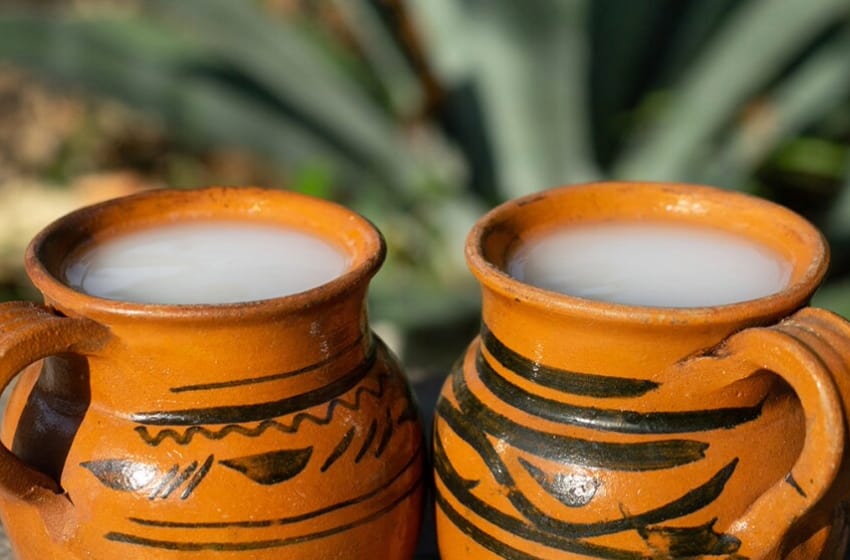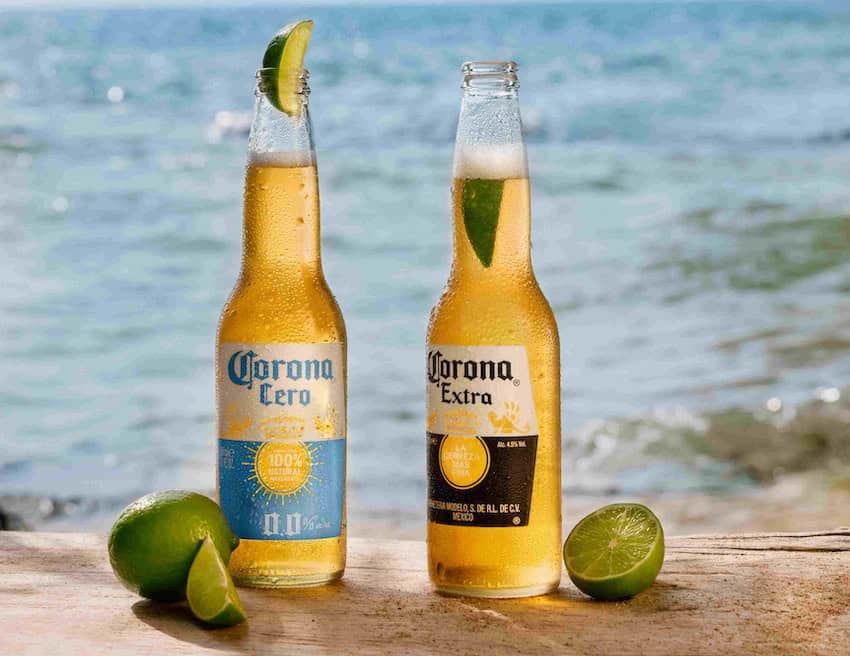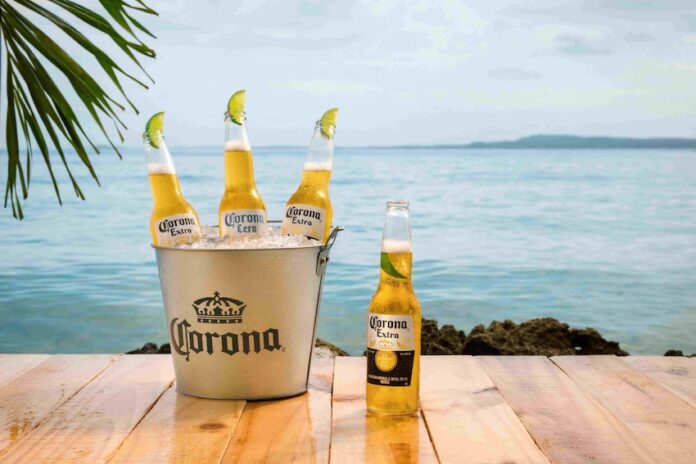It’s a sweltering summer afternoon. The sun burns mercilessly, but you have salvation in hand: a clear glass bottle catching light like a miniature sun, a wedge of lime perched at its mouth. With that first crisp sip, you’re transported. This, dear reader, is the power of Corona Extra, a beer that this year celebrates its 100th birthday — not merely as another brew but as an icon of Mexican ingenuity, marketing bravado and cultural pride.
Corona is a ritual, a talisman of nostalgia and an ambassador for Mexican culture across the world. Exported to more than 180 countries, it ranks as the world’s most valuable beer brand for the fifth consecutive year, with a brand valuation of US $13.4 billion, according to a 2025 report by Brand Finance. Yet its story is far richer than mere numbers suggest.

Pulque vs. beer
Long before European-style beer arrived, Mexicans had a passionate affair with fermented pulque, the sacred agave wine of pre-Hispanic civilizations. Made from freshly extracted maguey sap, pulque fermented naturally over just a couple of days, producing a mildly alcoholic, viscous beverage central to religious rites and daily life.
Then came the Spaniards. In 1542, Don Alonso de Herrera, an émigré from Seville, petitioned Emperor Charles V for permission to establish the first European-style brewery in the Americas. He set up at the Hacienda El Portal in the Valley of Mexico, and soon enough, he faced the challenges — sourcing barley and hops, royal taxes and logistic hurdles — to produce the colony’s first lagers and ales.
Five years later, his experiment failed. For three centuries, beer remained a European privilege in New Spain, while pulque stayed the people’s drink.
The 19th century reshaped Mexico. The effects of independence in 1821 unleashed aspirations for modernization: Foreign investment surged, railroads snaked across vast distances and mechanized factories promised unprecedented productivity. Yet, these gains primarily enriched a narrow elite, leaving most Mexicans to struggle for basic necessities.
By the 1860s, pulque had morphed from a household staple into big business for Mexico. In Mexico City — then with a population of less than half a million — some 500 pulquerías sold millions of liters weekly. The so-called “Pulque Aristocrat,” Ignacio Torres Adalid, earned 7,000 pesos in a single day while his workers scraped by on pennies.
A marketing coup

At the end of the 19th century, German immigrants brought brewing know-how to Mexico, alongside a flair for publicity. They cofounded the first Mexican breweries with Spanish, American and local partners, then ran whisper campaigns slandering pulque as unsanitary and morally corrupt. A pulque became seen as “fermented with filth,” while beer was “crisp, light, and hygienic.” The myth stuck and coupled with resentment towards the pulque barons like Torres, beer began to take over.
Between 1891 and 1900, dozens of breweries sprouted nationwide. Cervecería Between 1891 and 1900, dozens of breweries sprouted nationwide. Cervecería Cuauhtémoc began in 1891; Moctezuma in 1894; La Estrella in 1900. By 1899, 72 breweries were registered across Mexico. Enduring names like Victoria (1865), Bohemia (1905), Carta Blanca (1905), Sol (1907), Indio (1912) and Dos Equis (1921), laid the foundations of a national beer culture.
The birth of Corona
On March 8, 1922, baker-turned-industrialist Braulio Iriarte Goyeneche and banker Martín Oyamburu incorporated Cervecería Modelo, S.A., in Mexico City. In 1925, they opened Modelo’s first brewery and launched Modelo pale lager. One month later, they introduced a new recipe: Corona Extra.
Legends persist that Corona’s name derived from the crown atop the Church of Our Lady of Guadalupe in Puerto Vallarta. Yet that church wasn’t completed until 1930, and no contemporary record confirms the tale. It’s likelier that the iconic “crown” evoked European — particularly Bavarian — heritage, reinforcing Corona’s image of regal purity.
Corona’s clear-glass bottle was a stroke of genius: It showcased the beer’s golden clarity and differentiated it from dark-bottled rivals. By 1935, Modelo was acquiring competitors; by 1950, it had emerged as Mexico’s dominant brewer, its secret ingredient a marriage of technical excellence and visionary marketing.

Good beer or great marketing?
Corona’s marketing playbook reads like a master class in brand storytelling. The clear bottle conveyed “no secrets,” subtly contrasting with pulque’s murky associations. Even today, when pulque is no longer a rival, Cervecería Modelo reinforces the idea of purity and excellence by making crystal-clear beers.
It isn’t just the color that attracts drinkers across the world, though:
- Radio serials associated with the brand starred Mexican icons like singer and actor Pedro Infante. Corona was a unmissable sponsor of Infante’s serial, “Ahí viene Martín Corona,” which wove the brand into Mexicans’ nightly escapism.
- Until two decades ago, Corona-branded tables and chairs turned every taquería, corner store, and beach shack into a pop-up billboard. The clatter of their metal tables and seats became the unmistakable soundtrack of Mexican conviviality.
- Recognizing the beach as its natural habitat, Corona later championed marine conservation campaigns to protect the shores that inspired its imagery.
- No one knows exactly why the lime wedge became protocol. Whether it was to sanitize drinkers’ lips or to enhance flavor, the custom endures as beer’s most enduring garnish.
From Mexico City to Mozambique
Corona’s global takeoff began in 1976, when Grupo Modelo partnered with Canadaigua Wine Company (pre-Constellation Brands) to serve Mexican-American communities. By 1985, Modelo had secured the Corona trademark for the entire United States, unleashing nationwide distribution; South America and Europe followed. Today, Corona graces every inhabited continent.
Half of Corona’s exports land in the U.S. Another 15% end up in Canada, 10% in the U.K., 8% in Australia, and 5% in Japan. Wherever it appears, from Burkina Faso to Uzbekistan, from Barbados to Russia, it offers expatriate Mexicans — and their friends — a potent taste of home.
A new chapter
In 2008, under CEO Carlos Fernández, Grupo Modelo negotiated a majority-stake sale to global brewing titan Anheuser-Busch InBev. By 2012, AB InBev acquired the remaining shares for US$20.1 billion — one of the biggest deals in industry history.
To satisfy U.S. antitrust rules, American distribution rights moved to Constellation Brands, while AB InBev retained global brewing and marketing outside the U.S. Thus, in the United States, Corona is a Constellation import; internationally, it’s an AB InBev brand — yet its spirit remains distinctly Mexican.
Sustainability and innovation
With millennials and Gen-Z drinking less alcohol and caring deeply about environmental impact, Grupo Modelo created Corona Cero, its nonalcoholic variant. Even more ambitiously, Corona pledges to safeguard Mexico’s precious water resources. Both AB InBev and Constellation Brands have financed watershed restoration projects, committing to replenish more freshwater than they consume. As Corona enters its second century, its sustainability initiatives warrant both scrutiny and applause.
Corona’s century-long saga is, at its heart, the story of how Mexico learned to narrate itself — first to its own citizens, then to the world. From pulque’s agrarian origins to European-style breweries; from local radio dramas to global ad campaigns — Corona embodies a national journey toward modernity without sacrificing authenticity.
María Meléndez is a Mexico City food blogger and influencer.
